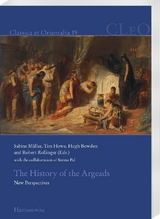 Maksymiuk, Katarzyna & Gholamreza Karamian (eds.). 2017. Crowns, hats, turbans and helmets. The headgear in Iranian history. Volume I: Pre-Islamic Period. Siedlce & Tehran: Siedlce University of Natural Sciences and Humanities.
Maksymiuk, Katarzyna & Gholamreza Karamian (eds.). 2017. Crowns, hats, turbans and helmets. The headgear in Iranian history. Volume I: Pre-Islamic Period. Siedlce & Tehran: Siedlce University of Natural Sciences and Humanities.
Table of contents:
- Joanna SZKLARZ: Significance of the Helmet in fight between Sohrāb and Gordāfarid
- Dan-Tudor IONESCU: The Use of the Tiara as symbol of Persian Achaemenid Kingship: why Alexander the Great didn’t adopt it?
- Svyatoslav V. SMIRNOV: Revising Seleukid Iconography: A Person Wearing Helmet and Conflict of Imageries
- Ulf JÄGER: Morion-type Helmets of Gandhāra. A rare Kušān-period helmet-type of the 1st to the 3rd / 4th century CE – A very first preliminary attempt
- Mariusz MIELCZAREK: Arms and Armour on Kušān coins. Royal images
- Patryk SKUPNIEWICZ, Marcin LICHOTA: Diadem on the head from Khalchayan battle scene and possible reconstruction of the composition
- Katarzyna MAKSYMIUK: Ram’s Horns as a Religious Element of Sasanian Kings’ Military Equipment (notes to Amm. Marc. XIX.1.3)
- Gholamreza KARAMIAN, Kaveh FARROKH, Adam KUBIK, Mandana TAHERI OSHTERINANI: An Examination of Parthian and Sasanian Military Helmets (2nd century BC-7th century CE)
- Ilkka SYVÄNNE: A Note on the Methodology regarding the Reconstruction of the Late Roman Helmets in Art, Archaeology and Analysis
- Marta CZERWIENIEC-IVASYK: Helmet or a crown? – A few comments on the margin of the Sasanian coins discovered in the Baltic Sea area
- Adam KUBIK: Sasanian lamellar helmets
- Patryk SKUPNIEWICZ: On the Helmet on the Capital at Ṭāq-e Bostān again
- David NICOLLE: One-piece Sasanian and Early Islamic Helmets
- Sergei Yu. KAINOV: The Helmet from Krasnodar Territory
 Müllerm Sabine, Timothy Howe, Hugh Bowden & Robert Rollinger (eds.). 2017.
Müllerm Sabine, Timothy Howe, Hugh Bowden & Robert Rollinger (eds.). 2017.  Nawotka, Krzysztof. 2017.
Nawotka, Krzysztof. 2017.  Cinzia, Bearzot & Landucci Franca (eds.). (2016).
Cinzia, Bearzot & Landucci Franca (eds.). (2016).  Briant, Pierre. 2017.
Briant, Pierre. 2017.  Nawotka, Krzysztof & Agnieszka Wojciechowska (eds.). 2016.
Nawotka, Krzysztof & Agnieszka Wojciechowska (eds.). 2016. 
 Howe, Time & Sabine Müller (eds.). 2016.
Howe, Time & Sabine Müller (eds.). 2016.